
Keywords: ethics

|
Otago GE Wasp Project Violates International Gene Drive AgreementGE-Free NZ, Scoop, 2024.
Professor Dearden, Otago University, has received $11 million from the Ministry of Business, Innovation and Enterprise (MBIE) to engineer wasps using gene drive technology. He is only consulting with Māori and regulators, ignoring and side-lining the views of other concerned New ... Keywords: ethics, gene drive synthetic, policy, regulation, synthetic homing drive |
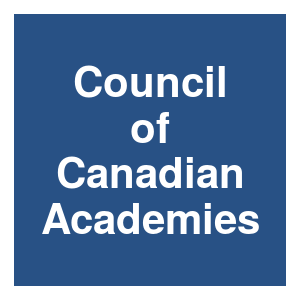
|
Framing Challenges and Opportunities for Canada: Expert Panel on Regulating Gene-Edited Organisms for Pest ControlCCA (Council of Canadian Academies), Framing Challenges and Opportunities for Canada, 2023.
Gene-editing technologies are changing approaches to pest management. Rapidly evolving but unproven gene-editing tools could potentially mitigate the impacts of pests in public health, conservation, and agricultural contexts. The use of these tools, however, is accompanied by ... Keywords: ethics, gene drive synthetic, policy, regulation, synthetic homing drive |

|
Transformative Novel Technologies and Global Environmental GovernanceF. Rabitz, Cambridge University Press, 2023.
Transformative Novel Technologies are potential gamechangers for confronting climate change, biodiversity loss, and many other elements of the global environmental crisis, allowing us to achieve a more sustainable future. The contemporary and future international governance of ... Keywords: ethics, gene drive synthetic, policy, regulation, synthetic homing drive |

|
Gene Drive Mosquitoes from Islamic Perspective: A Preliminary DiscussionN. M. Isa, Global Journal Al-Thaqafah, 13. 2023.
Gene drive mosquitoes could spread desired trait, such as female infertility within a wild population at a rate higher than the normal inheritance rate and could eventually wipe out the population. Consequently, this makes gene drive mosquitoes one of the promising approaches in ... Keywords: ethics, gene drive synthetic, policy, regulation, synthetic homing drive |
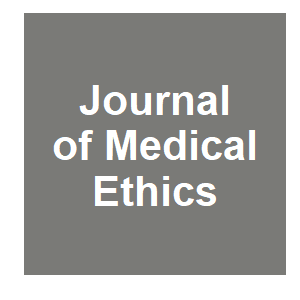
|
Guerrilla eugenics: gene drives in heritable human genome editingA. D. Cutter, J Med Ethics, 2023.
CRISPR-Cas9 genome editing can and has altered human genomes, bringing bioethical debates about this capability to the forefront of philosophical and policy considerations. Here, I consider the underexplored implications of CRISPR-Cas9 gene drives for heritable human genome ... Keywords: ethics, gene drive synthetic, policy, regulation, synthetic homing drive |

|
The attitudes of young adults towards mammalian predator control and Predator Free 2050 in Aotearoa New ZealandL. Dickie and F. Medvecky, Australasian Journal of Environmental Management, 2023.
Predator Free 2050 (PF2050) is an ambitious goal that aims to remove three types of invasive mammals from New Zealand by 2050. It will require a significant amount of funding, research, and support. Young adults will have an important role to play for this programme to be ... Keywords: ethics, gene drive synthetic, policy, regulation, synthetic homing drive |
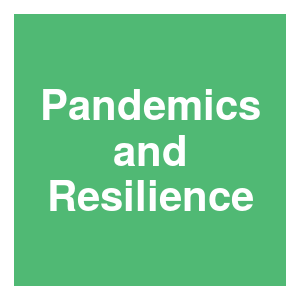
|
Gene DrivesD. M. Berube, Pandemics and Resilience, 2023.
A “gene drive” is a version of gene editing—a newer, more precise way to change a DNA (or RNA) sequence; in this case, combining a guide RNA with an enzyme that can make a gene drive takes this to another level, making sure that a new or altered genetic sequence has a ... Keywords: ethics, gene drive synthetic, policy, regulation, synthetic homing drive |

|
The boundary problem: Defining and delineating the community in field trials with gene drive organismsN. de Graeff, I. Pirson, R. van der Graaf, A. L. Bredenoord and K. R. Jongsma, Bioethics, 2023.
Despite widespread and worldwide efforts to eradicate vector-borne diseases such as malaria, these diseases continue to have an enormous negative impact on public health. For this reason, scientists are working on novel control strategies, such as gene drive technologies (GDTs). ... Keywords: ethics, gene drive synthetic, policy, regulation, synthetic homing drive |

|
Gene Drives as Interventions into Nature: the Coproduction of Ontology and Morality in the Gene Drive DebateK. Boersma, B. Bovenkerk and D. Ludwig, NanoEthics, 17:4. 2023.
Gene drives are potentially ontologically and morally disruptive technologies. The potential to shape evolutionary processes and to eradicate (e.g. malaria-transmitting or invasive) populations raises ontological questions about evolution, nature, and wilderness. The ... Keywords: ethics, gene drive synthetic, policy, regulation, synthetic homing drive |

|
Evolution driven by genetic engineering should be known as ‘genetic welding’ to draw scientific and ethical scrutinyS. Moore, AZO Life Sciences, 2023.
The advent of CRISPR-Cas9 technology has been revolutionary, but it has also been highly controversial. In an opinion paper published in the journal Trends in Genetics, evolutionary geneticist Asher Cutter highlights the importance of coining the term ‘genetic welding’ for ... Keywords: ethics, gene drive synthetic, policy, regulation, synthetic homing drive |

|
What should we call evolution driven by genetic engineering? Genetic welding, says researcherCell Press, Phys Org, 2023.
With CRISPR-Cas9 technology, humans can now rapidly change the evolutionary course of animals or plants by inserting genes that can easily spread through entire populations. Evolutionary geneticist Asher Cutter proposes that we call this evolutionary meddling “genetic ... Keywords: ethics, gene drive synthetic, policy, regulation, synthetic homing drive |

|
Alleviating the burden of malaria with gene drive technologies? A biocentric analysis of the moral permissibility of modifying malaria mosquitoesN. de Graeff, K. R. Jongsma and A. L. Bredenoord, Journal of Medical Ethics, 2023.
Gene drive technologies (GDTs) have been proposed as a potential new way to alleviate the burden of malaria, yet have also raised ethical questions. A central ethical question regarding GDTs relates to whether it is morally permissible to intentionally modify or eradicate ... Keywords: ethics, gene drive synthetic, policy, regulation, synthetic homing drive |
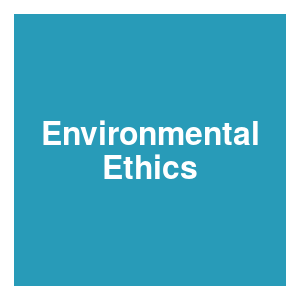
|
The Anthropocene as the End of Nature? Why Recognizing Interventionism Is Key in Coming to Terms with the AnthropoceneK. Boersma, ENVIRONMENTAL ETHICS, 44:195-219. 2023.
In this article, I address and argue against the tendency to understand the anthropocene as inaugurating the end of nature. I conduct two key moves. First, by way of an engagement with the concept of anthropocene technology I explain how understanding the anthropocene as the end ... Keywords: ethics, gene drive synthetic, policy, regulation, synthetic homing drive |
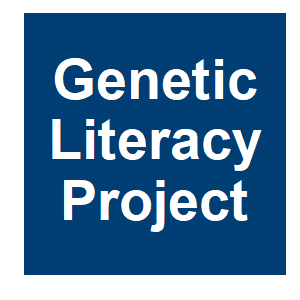
|
Social justice environmental activists move to block gene editing to control invasive species and promote biodiversity. Here’s why they’re misguidedS. Smyth, Genetic Literacy Project, 2023.
Control of invasive species has been extremely difficult with eradication virtually impossible. To control invasive plant species, chemicals are commonly used while in some instances removal of plants by hand, as Shiva advocates, is undertaken. Efforts to control invasive animals ... Keywords: ethics, gene drive synthetic, policy, regulation, synthetic homing drive |

|
Ethical dilemma: Should we get rid of mosquitoes?Talya Hackett, TED-Ed, 2023.
Mosquitoes are responsible for more human deaths every year than any other animal, but very few of the 3,500 mosquito species actually transmit deadly diseases to humans. Scientists have been conducting experiments using engineered technologies called gene drives that could ... Keywords: ethics, gene drive synthetic, policy, regulation, synthetic homing drive |
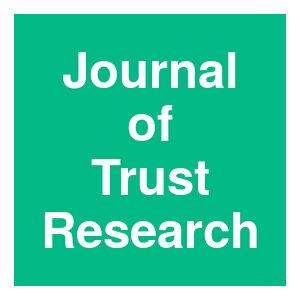
|
Trust in science and scientists: Effects of social attitudes and motivations on views regarding climate change, vaccines and gene drive technologyH. G. W. Dixson, A. F. Komugabe-Dixson, F. Medvecky, J. Balanovic, H. Thygesen and E. A. MacDonald, Journal of Trust Research, 2023.
Trust in science and scientists (TSS) is an increasingly important topic with respect to how science is applied within society. However, its role regarding specific issues may vary depending upon other psychosocial factors. In this study, we investigated how trust interacts with ... Keywords: ethics, gene drive synthetic, policy, regulation, synthetic homing drive |
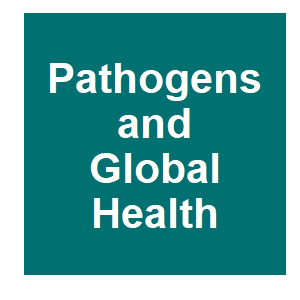
|
Genes drive organisms and slippery slopesD. B. Resnik, R. F. Medina, F. Gould, G. Church and J. Kuzma, Pathog Glob Health, 2022.
The bioethical debate about using gene drives to alter or eradicate wild populations has focused mostly on issues concerning short-term risk assessment and management, governance and oversight, and public and community engagement, but has not examined big-picture- 'where is this ... Keywords: ethics, gene drive synthetic, policy, regulation, synthetic homing drive |
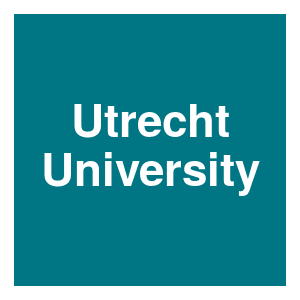
|
Gene drive technologies: navigating the ethical landscapeN. d. Graeff, Utrecht University, 2022.
Gene drives are technologies that modify a particular genetic element in animals or insects so that this genetic element does not follow the typical rules of heredity, and is passed onto future generations with an increased likelihood. Gene drive technologies could be used to ... Keywords: ethics, gene drive synthetic, policy, regulation, synthetic homing drive |

|
Ethics of gene drive mosquitoes for malaria eliminationA. J. Roberts, McMaster University, 2022.
This thesis is concerned with presenting analyses regarding key ethical issues regarding and arising from the development and potential use of gene drive modified mosquitoes for the purpose of malaria elimination. Each of the chapters constituting this thesis offers a rigorously ... Keywords: ethics, gene drive synthetic, policy, regulation, synthetic homing drive |

|
Hurdles in responsive community engagement for the development of environmental biotechnologiesA. M. Normandin, L. M. Fitzgerald, J. Yip and S. W. Evans, Synthetic Biology, 7:ysac022. 2022.
Recent calls for engaging communities in biotechnology development do not draw enough attention to the hurdles that must be overcome for engagement strategies to effectively feed back into research design and conduct. These hurdles call into question many standard ways of ... Keywords: ethics, gene drive synthetic, policy, regulation, synthetic homing drive |

|
Justifying an Intentional Species Extinction: The Case of Anopheles gambiaeD. E. Callies and Y. Rohwer, Environmental Values, 31:193-210. 2022.
Each year, over 200 million people are infected with the malaria parasite, nearly half a million of whom succumb to the disease. Emerging genetic technologies could, in theory, eliminate the burden of malaria throughout the world by intentionally eradicating the mosquitoes that ... Keywords: ethics, gene drive synthetic, policy, regulation, synthetic homing drive |

|
Exploring value changeT. E. de Wildt and V. J. Schweizer, Prometheus, 38. 2022.
This article aims to explore the use of cross-impact balances (CIB) to identify scenarios of value change. The possibility of value change has received little attention in the literature on value-sensitive design (VSD). Examples of value change include the emergence of new values ... Keywords: ethics, gene drive synthetic, policy, regulation, synthetic homing drive |

|
Governing Gene Drive Technologies: A Qualitative Interview StudyN. de Graeff, K. R. Jongsma, J. E. Lunshof and A. L. Bredenoord, AJOB Empirical Bioethics, 13:107-124. 2022.
Gene drive technologies (GDTs) bias the inheritance of a genetic element within a population of non-human organisms, promoting its progressive spread across this population. If successful, GDTs may be used to counter intractable problems such as vector-borne diseases. A key issue ... Keywords: ethics, gene drive synthetic, policy, regulation, synthetic homing drive |

|
Should we kill every mosquito on Earth?J. Phelan, LiveScience, 2022.
Before you grab that can of bug spray, know this: While some mosquitoes are dangerous to us, not all are. Even those that are sometimes harmful tend not to feed on humans, preferring honeydew, plant sap and nectar, according to Mosquito Joe, a mosquito control company. There are ... Keywords: ethics, gene drive synthetic, policy, regulation, synthetic homing drive |

|
Regulation of genetically engineered (GE) mosquitoes as a public health tool: a public health ethics analysisZ. Meghani, Globalization and Health, 18:21. 2022.
In recent years, genetically engineered (GE) mosquitoes have been proposed as a public health measure against the high incidence of mosquito-borne diseases among the poor in regions of the global South. While uncertainties as well as risks for humans and ecosystems are entailed ... Keywords: ethics, gene drive synthetic, policy, regulation, synthetic homing drive |
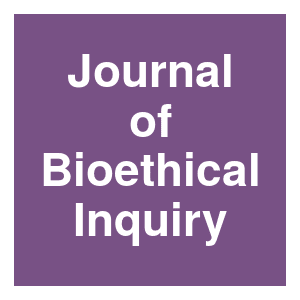
|
An Ethical Overview of the CRISPR-Based Elimination of Anopheles gambiae to Combat MalariaI. J. Wise and P. Borry, Journal of Bioethical Inquiry, 2022.
Approximately a quarter of a billion people around the world suffer from malaria each year. Most cases are located in sub-Saharan Africa where Anopheles gambiae mosquitoes are the principal vectors of this public health problem. With the use of CRISPR-based gene drives, the ... Keywords: ethics, gene drive synthetic, policy, regulation, synthetic homing drive |

|
A preliminary framework for understanding the governance of novel environmental technologies: Ambiguity, indeterminateness and driftF. Rabitz, M. Feist, M. Honegger, J. Horton, S. Jinnah and J. Reynolds, Earth System Governance, 12:100134. 2022.
We propose a conceptual framework to explain why some technologies are more difficult to govern than others in global environmental governance. We start from the observation that some technologies pose transboundary environmental risks, some provide capacities for managing such ... Keywords: ethics, gene drive synthetic, policy, regulation, synthetic homing drive |

|
Articulating ethical principles guiding Target Malaria’s engagement strategyA. J. Roberts and D. Thizy, Malaria Journal, 21:35. 2022.
Progress in gene drive research has engendered a lively discussion about community engagement and the ethical standards the work hinges on. While there is broad agreement regarding ethical principles and established best practices for conducting clinical public health research, ... Keywords: ethics, gene drive synthetic, policy, regulation, synthetic homing drive |

|
Gene Editing Is Popular, But Controversial, Research AreRelias, RELIAS MEDIA, 2022.
Gene drive research carries great potential for controlling insect vectors of devastating diseases, but there are multiple unresolved ethical concerns. Unanticipated “downstream” effects on ecosystems, or in organisms that carry the gene drive machinery, are possible. To help ... Keywords: ethics, gene drive synthetic, policy, regulation, synthetic homing drive |

|
Gene Drives in the U.K., U.S., and Australian Press (2015–2019): How a New Focus on Responsibility Is Shaping Science CommunicationA. Stelmach, B. Nerlich and S. Hartley, Science Communication, 10755470211072245. 2022.
Gene drive is a controversial biotechnology for pest control. Despite a commitment from gene drive researchers to responsibility and the key role of the media in debates about science and technology, little research has been conducted on media reporting of gene drive. We employ ... Keywords: ethics, gene drive synthetic, policy, regulation, synthetic homing drive |
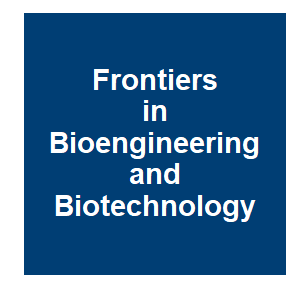
|
Ethical Considerations for Gene Drive: Challenges of Balancing Inclusion, Power and PerspectivesA. Kormos, G. C. Lanzaro, E. Bier, V. Santos, L. Nazare, J. Pinto, A. A. dos Santos and A. James, Frontiers in Bioengineering and Biotechnology, 2022.
Progress in gene-drive research has stimulated discussion and debate on ethical issues including community engagement and consent, policy and governance, and decision-making involved in development and deployment. Many organizations, academic institutions, foundations, and ... Keywords: ethics, gene drive synthetic, policy, regulation, synthetic homing drive |

|
Podcast: Malaria Gene DriveS. Hartley, S. Neema and C. Opesen, University of Exeter Business School, 2021.
Professor Sarah Hartley and her two colleagues in Uganda, Stella Neema and Chris Opesen discuss gene drive research for malaria control. Funded by British Academy and Wellcome trust, their work is to understand the social science challenges around the development of this kind of ... Keywords: ethics, gene drive synthetic, policy, regulation, synthetic homing drive |

|
Small-scale release of non-gene drive mosquitoes in Burkina Faso: from engagement implementation to assessment, a learning journeyL. Pare Toe, N. Barry, A. D. Ky, S. Kekele, W. Meda, K. Bayala, M. Drabo, D. Thizy and A. Diabate, Malaria Journal, 20:395. 2021.
This study provides a review of engagement activities relevant to field trials on non-gene drive genetically-modified mosquitoes as well as an assessment framework-using both qualitative and quantitative studies as well as an audit procedure. The latter was implemented to ... Keywords: ethics, gene drive synthetic, policy, regulation, synthetic homing drive |

|
Calling the latest gene technologies ‘natural’ is a semantic distraction — they must still be regulatedJ. A. Heinemann, D. J. Paull, S. Walker and B. Kurenbach, The Conversation, 2021.
Legislators around the world are being asked to reconsider how to regulate the latest developments in gene technology, genome editing and gene silencing. Both the European Court of Justice and the New Zealand High Court have ruled that genome editing techniques should remain ... Keywords: ethics, gene drive synthetic, policy, regulation, synthetic homing drive |

|
Knowing and Controlling: Engineering Ideals and Gene Drive for Invasive Species Control in Aotearoa New ZealandC. H. Ross, Nature Remade: Engineering Life, Envisioning Worlds, 2021.
On the islands of Aotearoa, also called New Zealand, invasive species have been a prominent and persistent concern for local ecosystems. Traditional methods of biological control, though, can be difficult to implement and often have harmful side- effects for the environment and ... Keywords: ethics, gene drive synthetic, policy, regulation, synthetic homing drive |
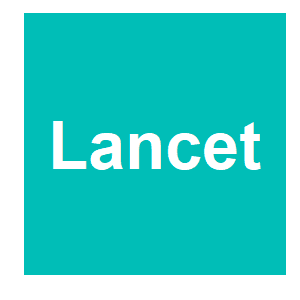
|
2021 WHO guidelines on genetically modified mosquitoesM. Makoni, The Lancet Microbe, 2:e353. 2021.
On May 19, 2021, WHO updated its guidelines for research and development on genetically modified mosquitoes, which define the standards for decision-making about how and when testing should proceed and describe best practices to ensure that research done in a public health ... Keywords: ethics, gene drive synthetic, policy, regulation, synthetic homing drive |

|
A new tool in the global fight against malariaS. Laux, Brighter World, 2021.
McMaster researchers with the Institute on Ethics & Policy for Innovation (IEPI) have played a key role in developing updated international guidelines that will inform research and development on genetically modified mosquitoes – an initiative that could significantly affect ... Keywords: ethics, gene drive synthetic, policy, regulation, synthetic homing drive |

|
Living With the Limits of Our New Clerisy’s KnowledgeR. Fernandez, PJ Media, 2021.
We are living in a strange time when reason has fallen short of human expectations and there is, once again, pressure to place our trust in faith. Leighton Woodhouse hit the nail on the head when he argued that we have appointed a New Clerisy to rule over us, not because they are ... Keywords: ethics, gene drive synthetic, policy, regulation, synthetic homing drive |
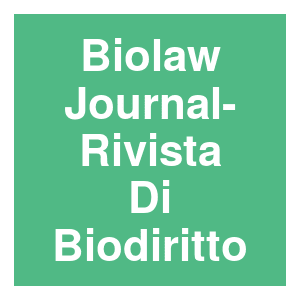
|
What is wrong in extinguishing a species? Charting the Ethical Challenges of using Gene-Drive Technologies to eradicate A. gambiae vector populationsM. Annoni and T. Pievani, Biolaw Journal-Rivista Di Biodiritto, 2021.
This article analyses three ethical arguments against the use of gene-drive technologies to control for, and possibly extinguish, a particular species of vector mosquitoes (Anopheles gambiae) causing the malaria infection. We conclude that none of these arguments is truly ... Keywords: ethics, gene drive synthetic, policy, regulation, synthetic homing drive |
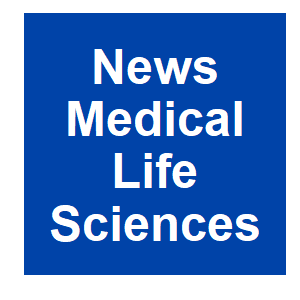
|
WHO releases new guidance for deployment of genetically modified mosquitoesE. Henderson, News Medical Life Sciences, 2021.
The World Health Organization (WHO) has released new guidance for the deployment of genetically modified (GM) mosquitoes to combat vector-borne diseases like malaria and dengue. GM mosquitoes may carry a gene that kills female progeny and the technology can be used against the ... Keywords: ethics, gene drive synthetic, policy, regulation, synthetic homing drive |

|
Genetically modified mosquitoes; WHO issues new guidance for researchDTE Staff, Down To Earth, 2021.
Genetically-modified mosquitoes or GMMs have been used across the world to control mosquitoes. GMMs have been able to bring down the population of the Aedes aegypti by 90 per cent in countries like Brazil, the Cayman Islands, Panama and Malaysia. But there have never been any ... Keywords: ethics, gene drive synthetic, policy, regulation, synthetic homing drive |

|
WHO issues new guidance for research on genetically modified mosquitoes to fight malaria and other vector-borne diseasesWHO, reliefweb, 2021.
New guidance from the World Health Organization (WHO) sets essential standards to inform future research and development on genetically modified mosquitoes, particularly in addressing issues relating to ethics, safety, affordability and effectiveness. Malaria and other ... Keywords: ethics, gene drive synthetic, policy, regulation, synthetic homing drive |

|
Guidance framework for testing of genetically modified mosquitoes, second editionWHO, WHO-TDR, 2021.
For more than 2 decades, scientists have been working to harness the promise of molecular biology to develop genetically modified mosquitoes (GMMs) for use as public health tools to prevent the transmission of vector-borne diseases. Responding to a need for additional standards ... Keywords: ethics, gene drive synthetic, policy, regulation, synthetic homing drive |

|
The legal regulation of gene drive technologiesC. Elves, Univeristy of Oxford, 2021.
Gene drive technologies purport to provide a panacea and yet in doing so present unprecedented risks that threaten to change, potentially irreversibly, the way in which we live in the world. Gene drive technologies raise questions about what ends societies ought to seek for their ... Keywords: ethics, gene drive synthetic, policy, regulation, synthetic homing drive |

|
CRISPR-Cas and Its Wide-Ranging Applications: From Human Genome Editing to Environmental Implications, Technical Limitations, Hazards and Bioethical IssuesR. Piergentili, A. Del Rio, F. Signore, F. U. Ronchi, E. Marinelli and S. Zaami, Cells, 10:24. 2021.
The CRISPR-Cas system is a powerful tool for in vivo editing the genome of most organisms, including man. During the years this technique has been applied in several fields, such as agriculture for crop upgrade and breeding including the creation of allergy-free foods, for ... Keywords: ethics, gene drive synthetic, policy, regulation, synthetic homing drive |

|
Experimenting with co-development: a qualitative study of gene drive research for malaria control in MaliS. Hartley, K. Ledingham, R. Owen, S. Leonelli, S. Diarra and S. Diop, Social Science and Medicine, 2021.
Our findings suggest co-development is opening up previously expert-dominated spaces as researchers attempt to take responsibility for the societal implications of their work. However, its main function is as a project management tool to enable and instrumentally support ... Keywords: ethics, gene drive synthetic, policy, regulation, synthetic homing drive |

|
Ethics of Genome EditingEuropean Group on Ethics, European Group on Ethics in Science and New Technologies, 2021.
This Opinion addresses the profound ethical questions raised and revived by them. It analyses various domains of application, from human health to animal experimentation, from livestock breeding to crop variety and to gene drives. With its wide view across areas, it identifies ... Keywords: ethics, gene drive synthetic, policy, regulation, synthetic homing drive |
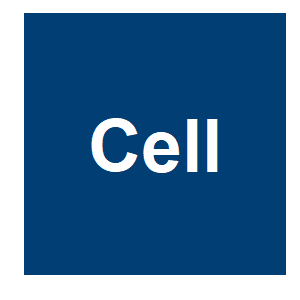
|
The ethical scientist in a time of uncertaintyL. Zoloth, Cell, 184:1430-1439. 2021.
Using the example of gene drives for malaria control to explore the problem of deep uncertainty in biomedical research, I argue that profound uncertainty is an essential feature. Applying the language and presumptions of the discipline of philosophical ethics, I describe three ... Keywords: ethics, gene drive synthetic, policy, regulation, synthetic homing drive |

|
Differentiated impacts of human interventions on nature: Scaling the conversation on regulation of gene technologiesJ. A. Heinemann, D. J. Paull, S. Walker and B. Kurenbach, Elementa: Science of the Anthropocene, 9. 2021.
Biotechnology describes a range of human activities in medicine, agriculture, and environmental management. One biotechnology in particular, gene technology, continues to evolve both in capacity and potential to benefit and harm society. The purpose of this article is to offer a ... Keywords: ethics, gene drive synthetic, policy, regulation, synthetic homing drive |

|
Ugandan stakeholder hopes and concerns about gene drive mosquitoes for malaria control: new directions for gene drive risk governanceS. Hartley, R. D. J. Smith, A. Kokotovich, C. Opesen, T. Habtewold, K. Ledingham, B. Raymond and C. B. Rwabukwali, Malaria Journal, 20:149. 2021.
The African Union’s High-Level Panel on Emerging Technologies identified gene drive mosquitoes as a priority technology for malaria elimination. The first field trials are expected in 5–10 years in Uganda, Mali or Burkina Faso. In preparation, regional and international ... Keywords: ethics, gene drive synthetic, policy, regulation, synthetic homing drive |
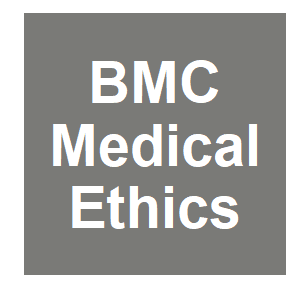
|
Experts’ moral views on gene drive technologies: a qualitative interview studyN. de Graeff, K. R. Jongsma and A. L. Bredenoord, BMC Medical Ethics, 22:25. 2021.
Gene drive technologies (GDTs) promote the rapid spread of a particular genetic element within a population of non-human organisms. Potential applications of GDTs include the control of insect vectors, invasive species and agricultural pests. Whether, and if so, under what ... Keywords: ethics, gene drive synthetic, policy, regulation, synthetic homing drive |

|
Hybrid mosquitoes? Evidence from rural Tanzania on how local communities conceptualize and respond to modified mosquitoes as a tool for malaria controlM. F. Finda, F. O. Okumu, E. Minja, R. Njalambaha, W. Mponzi, B. B. Tarimo, P. Chaki, J. Lezaun, A. H. Kelly and N. Christofides, Malaria Journal, 20:134. 2021.
Different forms of mosquito modifications are being considered as potential high-impact and low-cost tools for future malaria control in Africa. Although still under evaluation, the eventual success of these technologies will require high-level public acceptance. Understanding ... Keywords: ethics, gene drive synthetic, policy, regulation, synthetic homing drive |

|
The science & ethics of gene drive technology from a conservation & development perspectiveRenew Europe, Renew Europe, 2021.
This hearing intends to examine gene-drive technology and its possible impacts, including unintended ones and reveal the complexity of an unknown technology with inherent uncertainties. Scientists from different backgrounds in the field of gene-drive research will present most ... Keywords: ethics, gene drive synthetic, policy, regulation, synthetic homing drive |
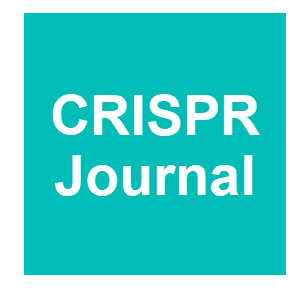
|
A Code of Ethics for Gene Drive ResearchG. J. Annas, C. L. Beisel, K. Clement, A. Crisanti, S. Francis, M. Galardini, R. Galizi, J. Grünewald, G. Immobile, A. S. Khalil, R. Müller, V. Pattanayak, K. Petri, L. Paul, L. Pinello, A. Simoni, C. Taxiarchi and J. K. Joung, The CRISPR Journal, 2021.
A code of ethics can be a useful tool for all parties involved in the development and regulation of gene drives and can be used to help ensure that a balanced analysis of risks, benefits, and values is taken into consideration for the interest of society and humanity. We have ... Keywords: ethics, gene drive synthetic, policy, regulation, synthetic homing drive |

|
In Our Image: The Ethics of CRISPR Genome EditingJ. C. Eissenberg, Biomolecular Concepts, 12:1-7. 2021.
Here, I discuss the ethics surrounding the transformative CRISPR/Cas9mediated genome editing technology in the contexts of human genome editing to eradicate genetic disease and of gene drive technology to eradicate animal vectors of human disease. Keywords: ethics, gene drive synthetic, policy, regulation, synthetic homing drive |

|
How to engage communities on a large scale? Lessons from World Mosquito Program in Rio de Janeiro, Brazil [version 2; peer review: 1 approved, 2 approved with reservations]G. B. Costa, R. Smithyman, S. L. O'Neill and L. A. Moreira, Gates Open Research, 2021.
Here we discuss and analyse the framework for community engagement implemented by the WMP in Brazil, during the large-scale deployment of the method in the municipalities of Niterói and Rio de Janeiro, Brazil. Our experience indicates that the community engagement work for ... Keywords: ethics, gene drive synthetic, policy, regulation, synthetic homing drive |
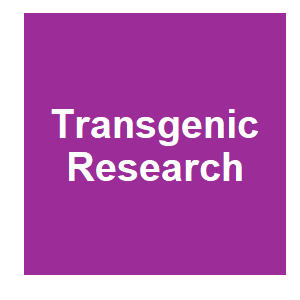
|
Playing God and tampering with nature: popular labels for real concerns in synthetic biologyL. Carter, A. Mankad, E. V. Hobman and N. B. Porter, Transgenic Research, 2021.
We present the findings from a large Australian study (N = 4593) which suggests ‘playing God’ objections and their variants can be multilayered and, at times, accompanied by meaningful information about risk perceptions. We use qualitative analysis of ope Keywords: ethics, gene drive synthetic, policy, regulation, synthetic homing drive |

|
Co‐developing a common glossary with stakeholders for engagement on new genetic approaches for malaria control in a local African settingE. Chemonges Wanyama, B. Dicko, L. Pare Toe, M. B. Coulibaly, N. Barry, K. Bayala Traore, A. Diabate, M. Drabo, J. K. Kayondo, S. Kekele, S. Kodio, A. D. Ky, R. R. Linga, E. Magala, W. I. Meda, S. Mukwaya, A. Namukwaya, B. Robinson, H. Samoura, K. Sanogo, Malaria Journal, 20:53. 2021.
Scientific terminologies are mainly lacking in local languages, yet when research activities involve international partnership, the question of technical jargon and its translation is crucial for effective and meaningful communication with stakeholders. Target Malaria, a ... Keywords: ethics, gene drive synthetic, policy, regulation, synthetic homing drive |

|
Exploring Gene Drive Technologies in Agriculture, Biodiversity and Human DiseaseThe GBIRd Partnership and The GeneConvene Global Collaborative, Gene Drive Research Forum, 2021.
The GBIRd Partnership and The GeneConvene Global Collaborative recently collaborated through The Gene Drive Research Forum, to create and produce an engaging conversation between Drs. Fred Gould and Charles Godfray about gene drive technologies – the potential benefits and ... Keywords: ethics, gene drive synthetic, policy, regulation, synthetic homing drive |
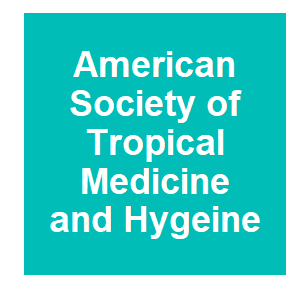
|
Application of the Relationship-Based Model to Engagement for Field Trials of Genetically Engineered Malaria VectorsA. Kormos, G. C. Lanzaro, E. Bier, G. Dimopoulos, J. M. Marshall, J. Pinto, A. Aguiar dos Santos, A. Bacar, H. Sousa Pontes Sacramento Rompão and A. A. James, The American Journal of Tropical Medicine and Hygiene, 2020.
Although guidelines and recommendations for engagement for gene drives have recently been described, we argue here that communities and stakeholders should lead the planning, development, and implementation phases of engagement. The RBM provides a new approach to the development ... Keywords: ethics, gene drive synthetic, policy, regulation, synthetic homing drive |

|
Scientists Set a Path for Field Trials of Gene Drive OrganismsM. Aguilera, UC San Diego News Center, 2020.
The modern rise of gene drive research, accelerated by CRISPR-Cas9 gene editing technology, has led to transformational waves rippling across science. Gene drive organisms (GDOs), developed with select traits that are genetically engineered to spread through a population, have ... Keywords: ethics, gene drive synthetic, policy, regulation, synthetic homing drive |

|
Engineered Gene Drives: Ecological, Environmental, and Societal ConcernsJ. Kuzma, GMOs: Implications for Biodiversity Conservation and Ecological Processes, 2020.
This chapter overviews the types, purposes, and potential impacts of gene drive organisms (GDOs) and discusses challenges with foreseeing and assessing these impacts prior to their environmental release. It concludes with a few examples of risk analysis methods and governance ... Keywords: ethics, gene drive synthetic, policy, regulation, synthetic homing drive |

|
Transformation and slippage in co-production ambitions for global technology development: The case of gene driveK. Ledingham and S. Hartley, Environmental Science & Policy, 116:78-85. 2020.
Co-production is an increasingly popular framework for knowledge generation, evaluation and decision making. Despite its potential to open up decisions and practices to the input of others, co-production regularly falls short of its transformative ambitions. Through documentary ... Keywords: ethics, gene drive synthetic, policy, regulation, synthetic homing drive |

|
Gene drives, species, and compassion for individuals in conservation biologyY. Rohwer, Ethics, Policy and Environment, 2020.
In this paper I argue that these compassionate conservationists have a moral obligation to support the investigation and development of genetic modification technologies because of their potential to minimize suffering and eliminate killing in conservation. Furthermore, I will ... Keywords: ethics, gene drive synthetic, policy, regulation, synthetic homing drive |

|
The ethical way to alter organismsK. Esvelt, Boston Globe, 2020.
As my colleagues and I first described in 2014, we can use CRISPR genome editing to duplicate the most powerful form of “gene drive,” a ubiquitous natural phenomenon that happens when a genetic change is inherited more frequently than usual. Encode the CRISPR machinery next ... Keywords: ethics, gene drive synthetic, policy, regulation, synthetic homing drive |

|
Ethics and vector-borne diseasesWHO, WHO Guidance, 2020.
The guidance was developed by an international group of experts in vector control, infectious disease ethics, maternal and child health, ecology and climate change, research and vaccine development, and public health communication. It examines a broad range of ethical ... Keywords: ethics, gene drive synthetic, policy, regulation, synthetic homing drive |

|
Bednets or Biotechnology: To Rescue Current Persons or Research for the Future?D. E. Callies, Fudan Journal of the Humanities and Social Sciences, 14. 2020.
After an exploration of the duty to rescue and cost-effectiveness analysis, I suggest we look towards the literature on intergenerational justice for a justifiable answer to the question of how we ought to allocate our malaria resources. Keywords: ethics, gene drive synthetic, policy, regulation, synthetic homing drive |
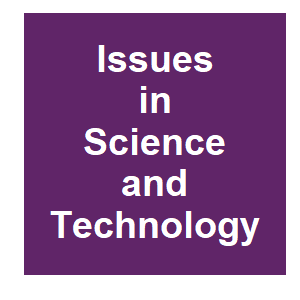
|
Socrates Untenured: Ethics, Experts, and the Public in the Synthetic AgeC. Preston, ISSUES in Science and Technology, 2020.
C. Preston (2020). Three tools have transformed biotechnology over the past decade and a half. Gene reading has made it possible to quickly sequence the genome of any living creature. Gene synthesis has made it possible to construct DNA sequences in the lab from constituent ... Keywords: ethics, gene drive synthetic, policy, regulation, synthetic homing drive |

|
Genome Editing 2020: Ethics and Human Rights in Germline Editing in Humans and Gene Drives in MosquitoesG. J. Annas, American Journal of Law and Medicine, 46:143-165. 2020.
G. J. Annas (2020). American Journal of Law and Medicine. doi: 10.1177/0098858820933492. I begin with a discussion of so far disastrously unsuccessful attempts to regulate germline editing in humans, including a summary of the first application of germline genome editing in ... Keywords: ethics, gene drive synthetic, policy, regulation, synthetic homing drive |

|
Gene Drive Webinars -ENSSER, CSS, VDW and SCEuropean Network of Scientists for Social and Environmental Responsibility, , 2020.
This series of 5 Webinars by some of the authors of the interdisciplinary Gene Drive Report (2019) and were organised by four organisations of independent scientists: the European Network of Scientists for Social and Environmental Responsibility (ENSSER), Critical Scientists ... Keywords: ethics, gene drive synthetic, policy, regulation, synthetic homing drive |

|
Species Extinction & the Case for a Global Moratorium on Gene DrivesM. Imken, ARC, 2020.
One million species are currently threatened with extinction, and humanity faces the challenge of stopping the sixth mass extinction in the history of our planet. Yet a new technology called Gene Drive enables human beings to reprogram wild species by genetic engineering and to ... Keywords: ethics, gene drive synthetic, policy, regulation, synthetic homing drive |

|
Gene drives: benefits, risks, and possible applicationsA. Deplazes-Zemp, U. Grossniklaus, F. Lefort, P. Müller, J. Romeis, A. Rüegsegger, N. Schoenenberger and E. Spehn, Swiss Academies Factsheets, 15. 2020.Gene drives are genetic elements that skew the pattern of inheritance of a given characteristic in sexually reproducing organisms. They can be used to spread a characteristic that can alter or even reduce the numbers of individuals in wild populations of a certain species. As ... Keywords: ethics, gene drive synthetic, policy, regulation, synthetic homing drive |

|
Islands as Laboratories: Indigenous Knowledge and Gene Drives in the PacificR. I. Taitingfong, Human Biology, 91:179-188. 2020.
This article argues that the genetic engineering technology known as gene drive must be evaluated in the context of the historic and ongoing impacts of settler colonialism and military experimentation on indigenous lands and peoples. After defining gene drive and previewing some ... Keywords: ethics, gene drive synthetic, policy, regulation, synthetic homing drive |

|
Position Paper on Integrated Vector Management: Strengthening AU Members’ Regulatory Capacities for Responsible Research Towards Elimination of Malaria in AfricaAfrican Union Development Agency - NEPAD, AUDA-NEPAD, 2020.
Africa continues to bear a heavy brunt of the malaria which is a disease transmitted by the female Anopheles mosquito. Thousands of lives, mostly of young children, are lost every year; which undermines efforts deployed at various levels for increased life expectancy and improved ... Keywords: ethics, gene drive synthetic, policy, regulation, synthetic homing drive |

|
Bioethical issues in genome editing by CRISPR-Cas9 technologyF. B. Ayanoglu, A. E. Elcin and Y. M. Elcin, Turkish Journal of Biology, 44:110-120. 2020.
Genome editing technologies have led to fundamental changes in genetic science. Among them, CRISPR-Cas9 technology particularly stands out due to its advantages such as easy handling, high accuracy, and low cost. It has made a quick introduction in fields related to humans, ... Keywords: ethics, gene drive synthetic, policy, regulation, synthetic homing drive |

|
‘Gene Drive’ to curb malaria raises ethical questions as wellGyanedra Nath Mitra, The Pioneer, 2020.
A new technology ‘Gene Drive’ for mosquito control is currently confined to the laboratory since it raises an ethical question, if such a technology could in future be misused to the detriment of humanity. Keywords: ethics, gene drive synthetic, policy, regulation, synthetic homing drive |

|
Regulation of GM Organisms for Invasive Species ControlH. J. Mitchell and D. Bartsch, Frontiers in Bioengineering and Biotechnology, 7:1-11. 2020.
Invasive species can cause significant harm to the environment, agriculture, and human health, but there are often very limited tools available to control their populations. Gene drives (GD) have been proposed as a new tool which could be used to control or eliminate such ... Keywords: ethics, gene drive synthetic, policy, regulation, synthetic homing drive |
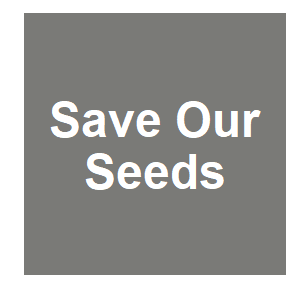
|
Gene Drive FilmSave Our Seeds, , 2020.
This is a video based on the findings in GENE DRIVES: A report on their science, applications, social aspects, ethics and regulations which you can find here. There was a Symposium on May 24, 2019 that covers the topics in the report and the presentations at that symposium can ... Keywords: ethics, gene drive synthetic, policy, regulation, synthetic homing drive |

|
A typology of community and stakeholder engagement based on documented examples in the field of novel vector controlC. E. Schairer, R. Taitingfong, O. S. Akbari and C. S. Bloss, PLoS Neglected Tropical Diseases, 13:e0007863. 2019.
Background Despite broad consensus on the importance of community and stakeholder engagement (CSE) for guiding the development, regulation, field testing, and deployment of emerging vector control technologies (such as genetically engineered insects), the types of activities ... Keywords: ethics, gene drive synthetic, policy, regulation, synthetic homing drive |

|
Articulating ‘free, prior and informed consent’ (FPIC) for engineered gene drivesGeorge, D. R., T. Kuiken and J. A. Delborne, Proceedings of the Royal Society B: Biological Sciences, 286:20191484.. 2019.
Recent statements by United Nations bodies point to free, prior and informed consent (FPIC) as a potential requirement in the development of engineered gene drive applications. As a concept developed in the context of protecting Indigenous rights to self-determination in land ... Keywords: ethics, gene drive synthetic, policy, regulation, synthetic homing drive |

|
Exterminator genes: The right to say no to ethics dumpingBassey-Orovwuje, M., J. Thomas and T. Wakeford, Development, 62:121-127. 2019.
The scientific-industrial complex is promoting a new wave of genetically modified organisms, in particular gene drive organisms, using the same hype with which they tried to persuade society that GMOs would be a magic bullet to solve world hunger. The Gates Foundation claims that ... Keywords: ethics, gene drive synthetic, policy, regulation, synthetic homing drive |

|
A cross-sectional survey of biosafety professionals regarding genetically modified insectsO’Brochta, D. A., W. K. Tonui, B. Dass and S. James, Applied Biosafety, 2019:1-9. 2019.
Background:Genetic technologies such as gene editing and gene drive create challenges for existing frameworks used to assess risk and make regulatory determinations by governments and institutions. Insect genetic technologies including transgenics, gene editing, and gene drive ... Keywords: ethics, gene drive synthetic, policy, regulation, synthetic homing drive |

|
Gene Drives and new genetic manipulation in agricultureTerra de Direitos, Terra de Direitos, 2019.
Gene drives are forms of genetic editing or manipulation of live organisms. They are the most dangerous forms of transgenics which edit genetic characteristics without necessarily including a new gene, but rather manipulating existing genes of live organisms, i.e. live organism ... Keywords: ethics, gene drive synthetic, policy, regulation, synthetic homing drive |

|
Efforts to enhance safety measures for CRISPR/Cas-based gene drive technology in JapanT. Tanaka, N. Tanaka, Y. Nagano, H. Kanuka, D. S. Yamamoto, N. Yamamoto, E. Nanba and T. Nishiuch, Journal of Environment and Safety, 2019.
Gene drive is a powerful system that can spread a desirable genetic trait into an entire species and/or population of a certain region, bypassing Mendelian rules of inheritance. Recently, one of the genome editing technologies, CRISPR/Cas, has been developed, making it easier to ... Keywords: ethics, gene drive synthetic, policy, regulation, synthetic homing drive |

|
Two unresolved issues in community engagement for field trials of genetically modified mosquitoesD. B. Resnik, Pathogens and Global Health, 113:238-245. 2019.
There is an emerging consensus among scientists, ethicists, and public health officials that substantive and effective engagement with communities and the wider public is required prior to releasing genetically modified mosquitoes into the environment. Keywords: ethics, gene drive synthetic, policy, regulation, synthetic homing drive |

|
Gene Drive Mosquitoes: Ethics, Environment and EfficacyL. Wilburn, ScienceInnovationUnion, 2019.
The Bill and Melinda Gates foundation has recently donated over $75 million to fund gene drive mosquito research by Target Malaria , a consortium that aims to develop technology for malaria control. The first planned release of gene drive mosquitoes is set to happen over the next ... Keywords: ethics, gene drive synthetic, policy, regulation, synthetic homing drive |

|
Gene Drive Symposium-Critical Science SwitzerlandCritical Scientists Switzerland; European Network of Scientists for Social and Environmental Responsibility; Vereinigung Deutscher Wissenschaftler, , 2019.
Keywords: ethics, gene drive synthetic, policy, regulation, synthetic homing drive |
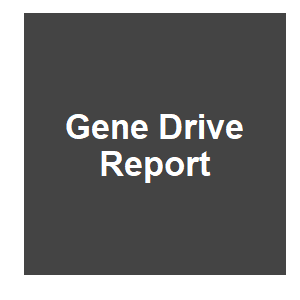
|
Gene Drives: A report on their science, applications, social aspects, ethics and regulationsH. Dressel, Critical Scientists Switzerland; European Network of Scientists for Social and Environmental Responsibility; Vereinigung Deutscher Wissenschaftler, 2019.
Engineered Gene Drives are a new form of genetic modification that provides the tools for permanently modifying or potentially even eradicating species or populations in the wild. Unlike the previous genetically modified organisms (GMOs), gene drive organisms (GDOs) are not meant ... Keywords: ethics, gene drive synthetic, policy, regulation, synthetic homing drive |

|
Gene drives and the international biodiversity regimeF. Rabitz, Review of European, Comparative & International Environmental Law, 2019.
Gene drives are genetic modifications designed for rapidly diffusing traits throughout a target population. They are currently being proposed as biological control agents to combat, for instance, invasive alien species and disease vectors. They also raise concerns regarding their ... Keywords: ethics, gene drive synthetic, policy, regulation, synthetic homing drive |
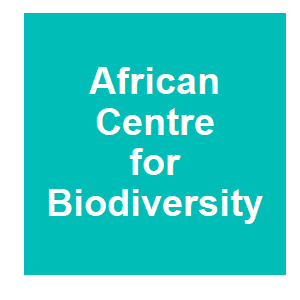
|
Gene drive organisms: What Africa should know about actors, motives and threats to biodiversity and food systemsSirinathsinghji, E., African Centre for Biodiversity., 2019.
In this briefing paper, we set out the key issues that our governments should have addressed with African civil society before endorsing positions and setting the benchmark for Africa-wide policy. In this regard, we point out that, while the impetus for the AU position might well ... Keywords: ethics, gene drive synthetic, policy, regulation, synthetic homing drive |

|
The ethical landscape of gene drive researchCallies, DE, Bioethics, 33:1091-1097. 2019.
Gene drive technology has immense potential. The ability to bypass the laws of Mendelian inheritance and almost ensure the transmission of specific genetic material to future generations creates boundless possibilities. But alongside these boundless possibilities are major social ... Keywords: ethics, gene drive synthetic, policy, regulation, synthetic homing drive |
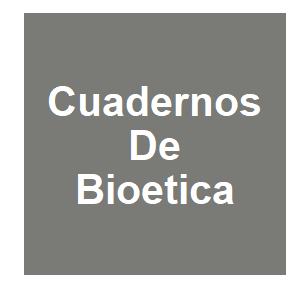
|
CRISPR-Cas9. The greatest advancement in genetic edition techniques requires an ethical reflectionGomez-Tatay, LA, J., Cuadernos De Bioetica, 30:171-185. 2019.
The adaptation of the CRISPR system as a genetic editing tool has led to a revolution in many fields of application, as this technique is considerably faster, easier to perform and more efficient than predecessor techniques. However, some of these applications raise objective ... Keywords: ethics, gene drive synthetic, policy, regulation, synthetic homing drive |
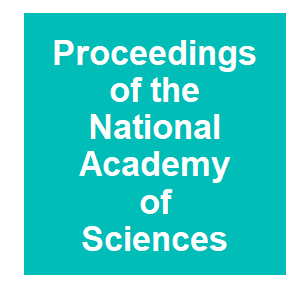
|
Promises and perils of gene drives: Navigating the communication of complex, post-normal scienceBrossard, DB, Pam; Gould, Fred; Wirz, Christopher D., Proceedings of the National Academy of Sciences of the United States of America, 116:7692-7697. 2019.
In November of 2017, an interdisciplinary panel discussed the complexities of gene drive applications as part of the third Sackler Colloquium on “The Science of Science Communication.” The panel brought together a social scientist, life scientist, and journalist to discuss ... Keywords: ethics, gene drive synthetic, policy, regulation, synthetic homing drive |
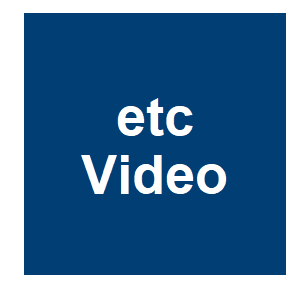
|
A Question of Consent: Exterminator Mosquitoes in Burkina FasoETC group, , 2019.
Target Malaria’s planned release of GMO mosquitos is step toward release of gene drive mosquitoes, a high-risk technology aimed at the elimination of entire species. Hundreds of organizations have demanded a moratorium on the use of this technology outside of ... Keywords: ethics, gene drive synthetic, policy, regulation, synthetic homing drive |

|
The Release of Genetically Engineered Mosquitoes in Burkina Faso: Bioeconomy of Science, Public Engagement and Trust in MedicineBeisel, UG, J. K., African Studies Review, 62:164-173. 2019.
Malaria, which is transmitted by mosquitoes, continues to be responsible for a significant number of disease episodes and childhood deaths on the African continent. A variety of mosquito control strategies are currently inplace, but since case numbers are rising again, and drug ... Keywords: ethics, gene drive synthetic, policy, regulation, synthetic homing drive |

|
Governing extinction in the era of gene editingMonast, JJ, North Carolina Law Review, 97:1329-1358. 2019.
CRISPR-Cas9 genome-editing technology (“CRISPR”) offers a potential solution for some of the world’s critical conservation challenges. Scientists are harnessing CRISPR to expand genetic diversity of endangered species, control invasive species, or enhance species’ ... Keywords: ethics, gene drive synthetic, policy, regulation, synthetic homing drive |

|
Gene driving the farm: who decides, who owns, and who benefits?Montenegro de Wit, M, Agroecology and Sustainable Food Systems, 43:1054-1074. 2019.
This commentary essay explores the social and ecological implications of gene-driving agriculture. Keywords: ethics, gene drive synthetic, policy, regulation, synthetic homing drive |

|
Informed consent and community engagement in open field research: lessons for gene drive scienceSingh, JA, BMC Medical Ethics, 20:54. 2019.
The development of the CRISPR/Cas9 gene editing system has generated new possibilities for the use of gene drive constructs to reduce or suppress mosquito populations to levels that do not support disease transmission. Despite this prospect, social resistance to genetically ... Keywords: ethics, gene drive synthetic, policy, regulation, synthetic homing drive |
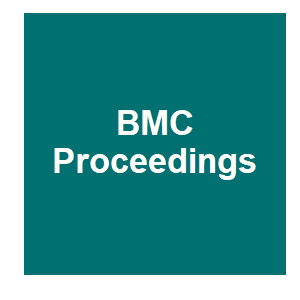
|
An introduction to the proceedings of the environmental release of engineered pests: Building an international governance frameworBrown, Z. S., L. Carter and F. Gould, BMC Proceedings, 12:10. 2018.
In October 2016, a two-day meeting of 65 academic, government and industry professionals was held at North Carolina State University for early-stage discussions about the international governance of gene drives: potentially powerful new technologies that can be used for the ... Keywords: ethics, gene drive synthetic, policy, regulation, synthetic homing drive |
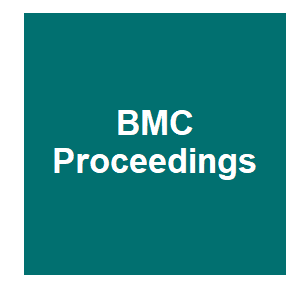
|
Means and ends of effective global risk assessments for genetic pest managementTurner, G., C. Beech and L. Roda, BMC Proceedings, 12:13. 2018.
The development and use of genetic technologies is regulated by countries according to their national laws and governance structures. Legal frameworks require comprehensive technical evidence to be submitted by an applicant on the biology of the organism, its safety to human, ... Keywords: ethics, gene drive synthetic, policy, regulation, synthetic homing drive |
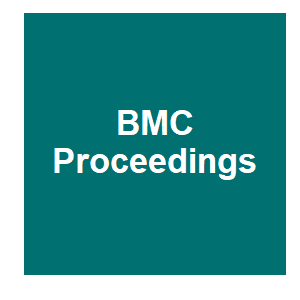
|
Towards inclusive social appraisal: risk, participation and democracy in governance of synthetic biologyStirling, A., K. R. Hayes and J. Delborne, BMC Proceedings, 12:15. 2018.
Frameworks that govern the development and application of novel products, such as the products of synthetic biology, should involve all those who are interested or potentially affected by the products. The governance arrangements for novel products should also provide a ... Keywords: ethics, gene drive synthetic, policy, regulation, synthetic homing drive |
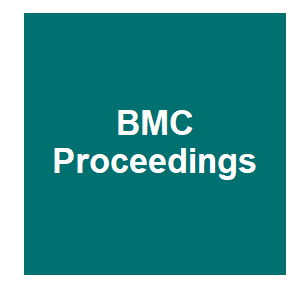
|
Public engagement pathways for emerging GM insect technologiesBurgess, M. M., J. D. Mumford and J. V. Lavery, BMC Proceedings, 12:12. 2018.
Policy and management related to the release of organisms generated by emerging biotechnologies for pest management should be informed through public engagement. Regulatory decisions can be conceptually distinguished into the development of frameworks, the assessment of the ... Keywords: ethics, gene drive synthetic, policy, regulation, synthetic homing drive |
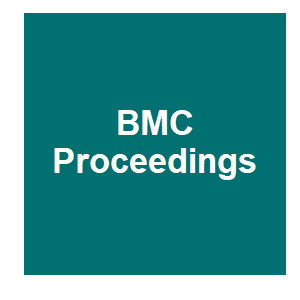
|
Regulation of emerging gene technologies in IndiaAhuja, V., BMC Proceedings, 12:14. 2018.
In India, genetically modified organisms (GMOs) and the products thereof are regulated under the “Rules for the manufacture, use, import, export & storage of hazardous microorganisms, genetically engineered organisms or cells, 1989” (referred to as Rules, 1989) notified under ... Keywords: ethics, gene drive synthetic, policy, regulation, synthetic homing drive |

|
Population Engineering | Gene Drive by CRISPR-CAS9SciToons, , 2018.
The CRISPR-CAS9 genome editing technology is opening up previously inconceivable possibilities for the manipulation of organisms. Our ethical discussion appears to be far behind the pace of technological development. In this new SciToons video, we address how CRISPR-CAS9 can be ... Keywords: ethics, gene drive synthetic, policy, regulation, synthetic homing drive |
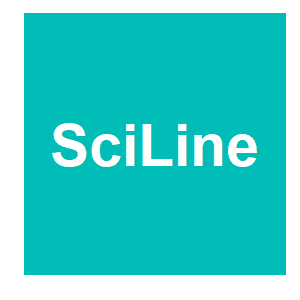
|
Gene DrivesSciLine, SciLine, 2018.
For many years now, scientists have been able to alter genes inside microbial, plant, and animal cells to change organisms’ traits, creating, for example, plants that produce their own protective insecticides and fish that grow to maturity almost twice as fast as normal. But ... Keywords: ethics, gene drive synthetic, policy, regulation, synthetic homing drive |

|
The ethical implications of population suppression and the irreversibility of gene drivesJ. Kim, International Journal of Life Sciences Research, 2018.
This paper aims to examine the current situation by presenting important ethical arguments that include Chardin’s principle of irreversibility and Weiss’ beliefs on intergenerational equity, ideals upheld by the United Nations Keywords: ethics, gene drive synthetic, policy, regulation, synthetic homing drive |
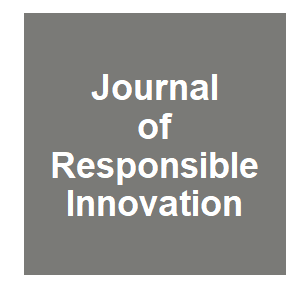
|
Regulating animals with gene drive systems: lessons from the regulatory assessment of a genetically engineered mosquitoZ. Meghani and J. Kuzma, Journal of Responsible Innovation, 5:S203-S222. 2018.
In this paper, we consider the question of whether the United States Food and Drug Administration is prepared to effectively regulate insects and other animals with gene drives. Given the profound impact that gene drives could have on species and ecosystems, their use is a ... Keywords: ethics, gene drive synthetic, policy, regulation, synthetic homing drive |
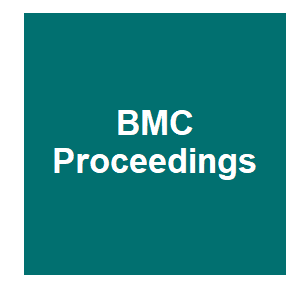
|
Means and ends of effective global risk assessments for genetic pest managementTurner, GB, Camilla; Roda, Lucia, BMC Proceedings, 12:13. 2018.
The development and use of genetic technologies is regulated by countries according to their national laws and governance structures. Legal frameworks require comprehensive technical evidence to be submitted by an applicant on the biology of the organism, its safety to human, ... Keywords: ethics, gene drive synthetic, policy, regulation, synthetic homing drive |

|
Development of community of practice to support quantitative risk assessment for synthetic biology products: contaminant bioremediation and invasive carp control as casesTrump, BF, C.; Rycroft, T.; Wood, M. D.; Bandolin, N.; Cains, M.; Cary, T.; Crocker, F.; Friedenberg, N. A.; Gurian, P.; Hamilton, K.; Hoover, J.J.; Meyer, C.; Pokrzywinski, K.; Ritterson, R.; Schulte, P.; Warner, C. ; Perkins, E.; Linkov, I., Environmental Systems and Decisions, 38:517-527. 2018.
Synthetic biology has the potential for a broad array of applications. However, realization of this potential is challenged by the paucity of relevant data for conventional risk assessment protocols, a limitation due to to the relative nascence of the field, as well as the poorly ... Keywords: ethics, gene drive synthetic, policy, regulation, synthetic homing drive |

|
Editing nature: Local roots of global governanceKofler, NC, James P.; Kuzma, Jennifer; Marris, Emma; Esvelt, Kevin; Nelson, Michael Paul; Newhouse, Andrew; Rothschild, Lynn J.; Vigliotti, Vivian S.; Semenov, Misha; Jacobsen, Rowan; Dahlman, James E.; Prince, Shannon; Caccone, Adalgisa; Brown, Timothy; Schmitz, Oswald J., Science, 362:527. 2018.
The end of malaria. Restored island habitats. Resiliency for species threatened by climate change. Many envisioned environmental applications of newly developed gene-editing techniques such as CRISPR might provide profound benefits for ecosystems and society. But depending on the ... Keywords: ethics, gene drive synthetic, policy, regulation, synthetic homing drive |

|
Community engagement and field trials of genetically modified insects and animalsNeuhaus, C. P., Hastings Center Report, 48:25-36. 2018.
New techniques for the genetic modification of organisms are creating new strategies for addressing persistent public health challenges. For example, the company Oxitec has conducted field trials internationally?and has attempted to conduct field trials in the United States?of a ... Keywords: ethics, gene drive synthetic, policy, regulation, synthetic homing drive |
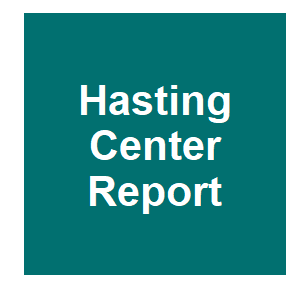
|
Making policies about emerging technologiesKaebnick, G. E. and M. K. Gusmano, Hastings Center Report, 48:S2-S11. 2018.
Can we make wise policy decisions about still-emerging technologies?decisions that are grounded in facts yet anticipate unknowns and promote the public's preferences and values? There is a widespread feeling that we should try. There also seems to be widespread agreement that the ... Keywords: ethics, gene drive synthetic, policy, regulation, synthetic homing drive |

|
Gene Drives Can Wipe Out Entire Species… Or Save ThemGizmodo, , 2017.
Bill Gates and other investors have poured millions into gene drives. So what is the technology and why are scientists worried about it? Keywords: ethics, gene drive synthetic, policy, regulation, synthetic homing drive |

|
Open until dangerous: gene drive and the case for reforming research to reduceK. Esvelt, N. Labenz, G. Church, Centre for Effective Altruism, 2017.
The wisdom with which we develop and deploy new technologies will define the future of our civilization. Why do we conduct reseearch in small teams of specialists who cannot reliably anticipate consequences on their own? Might it be better to share our best ideas and plans with ... Keywords: ethics, gene drive synthetic, policy, regulation, synthetic homing drive |

|
Principles for gene drive researchEmerson, CJ, Stephanie; Littler, Katherine; Randazzo, Filippo, Science, 358:1135. 2017.
The recent outbreak of Zika virus in the Americas renewed attention on the importance of vector-control strategies to fight the many vector-borne diseases that continue to inflict suffering around the world. In 2015, there were ?212 million infections and a death every minute ... Keywords: ethics, gene drive synthetic, policy, regulation, synthetic homing drive |

|
Agricultural pest control with CRISPR-based gene drive: time for public debate: Should we use gene drive for pest control?Courtier?Orgogozo, VM, Baptiste; Boëte, Christophe, EMBO Reports, 18:878-880. 2017.
Gene drive based on the CRISPR/Cas-9 gene editing system is a powerful technology that promotes the inheritance of the gene drive tool itself via sexual reproduction and can therefore spread quickly through a population. It holds great potential for public health and humanitarian ... Keywords: ethics, gene drive synthetic, policy, regulation, synthetic homing drive |
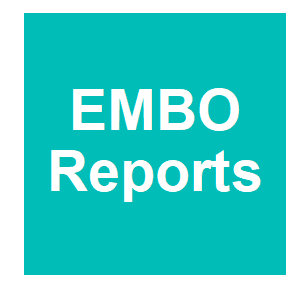
|
Unintended consequences of 21st century technology for agricultural pest managementYoung, SL, EMBO reports, 18:1478-1478. 2017.
Comment on Agricultural pest control with CRISPR-based gene drive: time for public debate by Courtier-Orgogozo et al. Keywords: ethics, gene drive synthetic, policy, regulation, synthetic homing drive |

|
The End of the GMO? Genome Editing, Gene Drives and New Frontiers of Plant TechnologyK. L. Hefferon and R. J. Herring, Review of Agrarian Studies, 7. 2017.
mprovements to agriculture will constitute one of the world’s greatest challenges in the coming century. Political and social controversies, as well as complications of plant breeding, intellectual property, and regulation, have compromised the promised impact of genetically ... Keywords: ethics, gene drive synthetic, policy, regulation, synthetic homing drive |

|
Genome editing: intellectual property and product development in plant biotechnologySchinkel, HS, S., Plant Cell Reports, 35:1487-1491. 2016.
Genome editing is a revolutionary technology in molecular biology. While scientists are fascinated with the unlimited possibilities provided by directed and controlled changes in DNA in eukaryotes and have eagerly adopted such tools for their own experiments, an understanding of ... Keywords: ethics, gene drive synthetic, policy, regulation, synthetic homing drive |

|
What is a Gene Drive?STAT, STAT, 2015.
This video produced by STAT, an e-news site focusing on health and medicine (https://www.statnews.com/). This video simply illustrates what geneticists mean by gene drive, and how homing-based gene drive work. (Note: it does not indicate that there are other mechanisms of gene ... Keywords: ethics, gene drive synthetic, policy, regulation, synthetic homing drive |

|
Playing God with mosquitoes? We humans have loftier aims.Pugh, J, The Conversation, 2015.
In a startling development in “gene-drive” technology, a team of researchers at the University of California has succeeded in creating genetically modified mosquitoes incapable of spreading the malaria parasite to humans, and which could potentially spread this trait rapidly ... Keywords: ethics, gene drive synthetic, policy, regulation, synthetic homing drive |

|
Ethical issues in field trials of genetically modified disease-resistant mosquitoesD. B. Resnik, Developing World Bioethics, 14:37-46. 2012.
Mosquito-borne diseases take a tremendous toll on human populations, especially in developing nations. In the last decade, scientists have developed mosquitoes that have been genetically modified to prevent transmission of mosquito-borne diseases, and field trials have been ... Keywords: ethics, gene drive synthetic, policy, regulation, synthetic homing drive |

|
Ethical, legal and social aspects of the approach in SudanB. B. El Sayed, C. A. Malcolm, A. Babiker, E. M. Malik, M. A. H. El Tayeb, N. S. Saeed, A. H. D. Nugud and B. G. J. Knols, Malaria Journal, 8:S3. 2009.
The global malaria situation, especially in Africa, and the problems frequently encountered in chemical control of vectors such as insecticide resistance, emphasize the urgency of research, development and implementation of new vector control technologies that are applicable at ... Keywords: ethics, gene drive synthetic, policy, regulation, synthetic homing drive |

Contact
David O’Brochta
Foundation for the
National Institutes of Health
geneconvenevi@fnih.org
RSS

